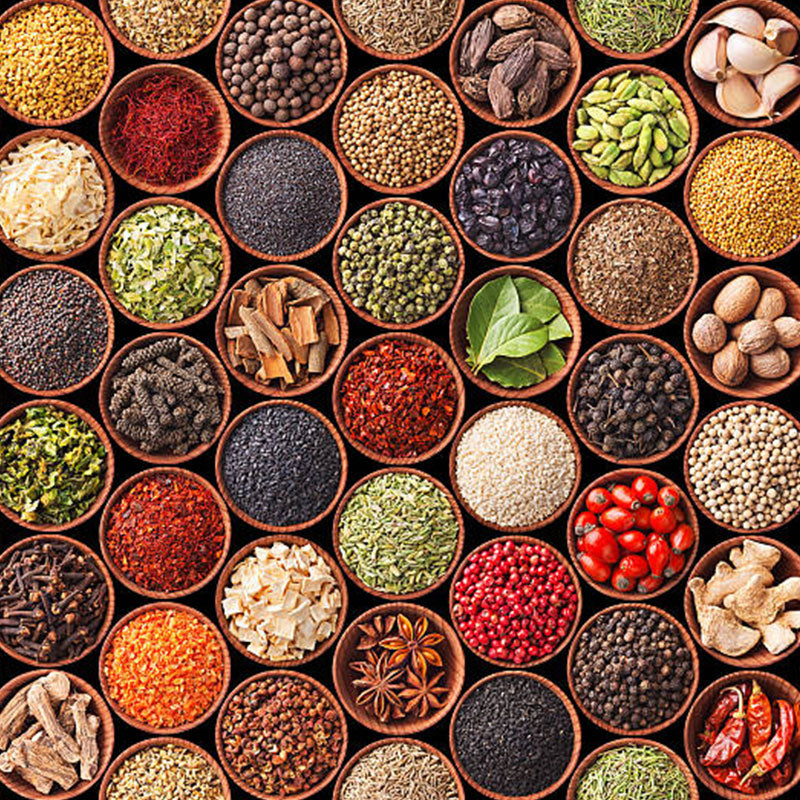
If you’re like most people, you probably have a cabinet or drawer in your kitchen that’s filled with all kinds of different spices and seasonings. And like most people, you probably don’t use them nearly as much as you could (or should) because you’re not really sure how to incorporate them into your cooking.
The truth is, using spices and seasonings is a great way to add flavor to your food without adding calories. They can also help you experiment with new flavor combinations and find ones that you really love.
In this article, we’re going to give you a crash course in all things spices and seasonings. We’ll teach you the basics of how to get started, why it’s important to use the right amount, how to experiment with different flavors, and some ideas for specific spices and seasonings to use in different dishes.
Section 1: The Basics – How To Get Started With Spices And Seasonings If you’re new to cooking with spices and seasonings, it can be a bit daunting. There are so many different options and it’s hard to know where to start. But don’t worry, we’re here to help. In this section, we’re going to give you a few tips on how to get started with spices and seasonings.
1. Start with the basics. When you’re first starting out, it’s best to stick to the basics. That means choosing a few basic spices or seasonings that you think you’ll use often. Some good options to start with are salt, pepper, garlic powder, onion powder, and paprika.
2. Gradually add to your collection. Once you’ve mastered the basics, you can start gradually adding to your collection of spices and seasonings. There are endless possibilities, so take your time and experiment with different flavors.
3. Keep it simple. When you’re first starting out, it’s best to keep things simple. That means using just a few spices or seasonings in each dish. As you get more comfortable, you can start using more. But don’t go overboard. A little goes a long way when it comes to spices and seasonings.
4. Be creative. Don’t be afraid to be creative with your spices and seasonings. There are no hard and fast rules. So if you want to experiment with a new flavor combination, go for it. The worst that can happen is that it doesn’t taste good.
5. Ask for help. If you’re still not sure where to start, don’t be afraid to ask for help. Talk to your friends, family, or even your local grocer. They’ll be able to give you some good ideas on what to try.
Section 2: Why It’s Important To Use The Right Amount Of Spices And Seasonings Now that you know the basics of how to get started with spices and seasonings, it’s time to talk about why it’s important to use the right amount.
1. Too much of a good thing. The first reason is that you can easily overpower a dish if you use too much of a spice or seasoning. This is especially true of strong spices like cumin or chili powder. So if you’re not careful, you can easily end up with a dish that’s too spicy or too salty.
2. Wasted ingredients. The second reason is that using too much of a spice or seasoning can be a wasted ingredient. That’s because most of us don’t have the palate to distinguish between a dish that’s well-seasoned and one that’s OVER-seasoned. So if you use too much, you’re not really getting the full benefit of the spice or seasoning.
3. The right amount. The third reason is that using the right amount of spices and seasonings can make a world of difference in the flavor of your dish. When you use just the right amount, the spices and seasonings enhance the flavors of the other ingredients, rather than overpowering them.
Section 3: How To Experiment With Different Spices And Seasonings To Find What You Like Now that you know the basics of how to get started with spices and seasonings, it’s time to start experimenting. This is where the fun really starts.
1. Try something new. One of the best things about cooking with spices and seasonings is that there are endless possibilities. So don’t be afraid to try something new. If you’re not sure where to start, talk to your friends, family, or even your local grocer. They’ll be able to give you some good ideas on what to try.
2. Start with a small amount. When you’re trying a new spice or seasoning, it’s always best to start with a small amount. That way, you can always add more if you need to. But if you start with too much, you can’t take it away.
3. Taste as you go. As you’re experiment with different spices and seasonings, be sure to taste your food as you go. This will help you gauge how much of a particular spice or seasoning you need to add.
4. Keep track of what you use. As you experiment with different spices and seasonings, it’s a good idea to keep track of what you use. That way, you can replicate a flavor combination that you really like.
5. Be patient. It takes time to find the perfect combination of spices and seasonings. So be patient and keep trying new things. Eventually, you’ll find a combination that you really love.
Section 4: Some Ideas For Specific Spices And Seasonings To Use In Different Dishes Now that you know how to get started with spices and seasonings, it’s time to start thinking about specific spices and seasonings to use in different dishes.
1. Beef. When it comes to beef, there are a few basic spices and seasonings that you can’t go wrong with. These include salt, pepper, garlic powder, and onion powder.
2. Chicken. When it comes to chicken, there are a few basic spices and seasonings that you can’t go wrong with. These include salt, pepper, garlic powder, and onion powder.
3. Fish. When it comes to fish, there are a few basic spices and seasonings that you can’t go wrong with. These include salt, pepper, lemon juice, and dill.
